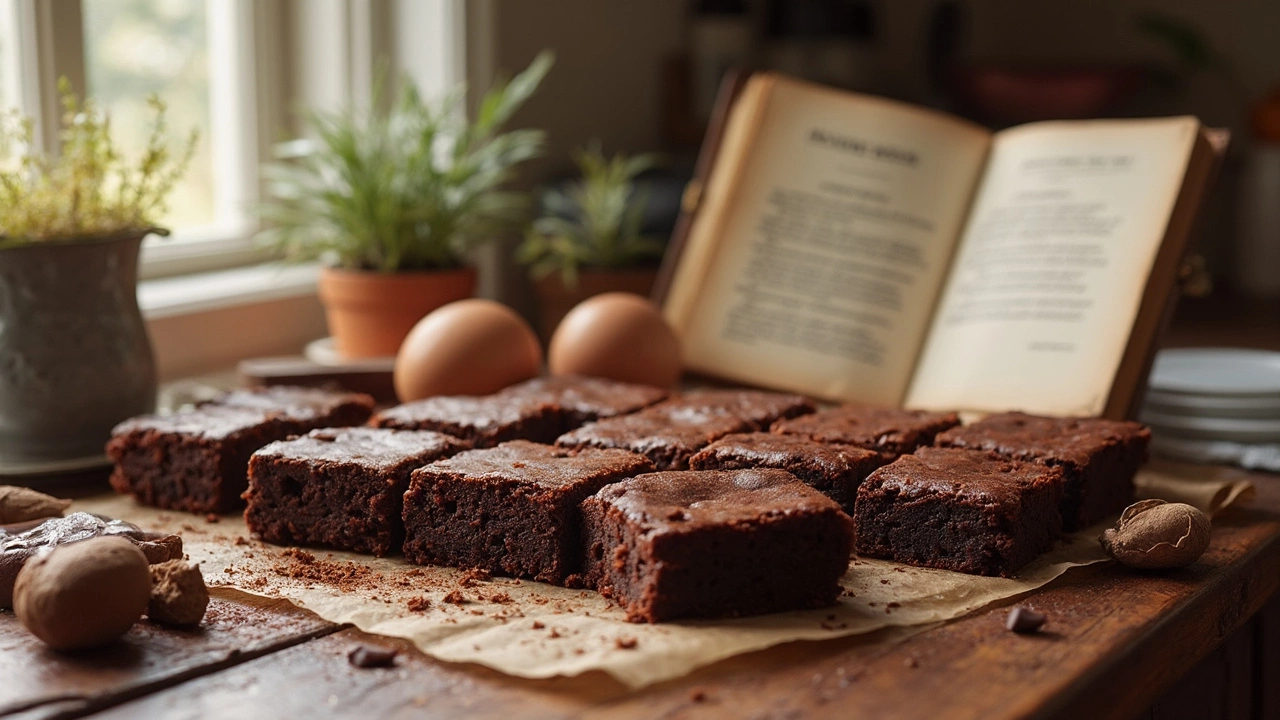
You know a brownie when you see one, right? Squarish, dark, and chocolatey—but what’s the real secret that makes a brownie a brownie instead of just any chocolate cake? It actually comes down to a few key things, and once you know them, you’ll never mix up your desserts again.
First up, it’s all about how dense and rich brownies are compared to cakes or cookies. They’re chewy. They don’t try to be airy like cake, and they’re definitely not something you’d dunk in milk like a cookie. Think of them as halfway between fudge and a soft cake—the kind of thing you pick up and can’t put down because it’s ooey, gooey, and packed with cocoa flavor.
But not every dark bar in a pan is a brownie. The classic brownies skip things like baking powder or yeast—so instead of rising up all fluffy, they bake into a moist, compact slab that delivers a chocolate punch with every bite. Once you get that, you’ll stop calling every chocolate bake a brownie and start looking for those key details.
- The Brownie Basics
- Classic Ingredients: What Goes In?
- Texture: Fudgy or Cakey?
- That Signature Crust
- Brownies Around the World
- Pro Tips for Brownie Perfection
The Brownie Basics
Alright, so what actually makes a brownie a brownie? It’s not just a square piece of chocolate baked in a pan. The first known recipe popped up in the United States in the late 1800s, giving this dessert its all-American status. Brownies quickly went from rare treat to bake sale superstar, mostly because they’re simple—no complicated techniques, no long shopping lists, just solid chocolatey payoff.
The main thing that sets brownies apart is their mix of ingredients. They have more fat (thanks to butter or oil) and a higher ratio of sugar and chocolate compared to regular cakes. This creates that rich, dense texture everyone loves. Forget about fluffiness—you’re looking for a firm but moist bite.
Brownies also don’t call for a lot of leavening agents like baking powder or baking soda. So, they don’t rise much. That’s why a brownie is never cakey (unless you want it that way), and it stays gooey inside once it cools. Some folks swear by the classic crackly top, which actually pops up when you beat the eggs and sugar well before mixing in the rest. Easy hack, right?
Here’s what most basic brownie recipes have in common:
- Plenty of real chocolate or unsweetened cocoa powder
- Butter or sometimes neutral oil
- Eggs (for structure and chewiness)
- Sugar—usually white, sometimes a little brown sugar
- Just a pinch of flour—not enough to turn it into cake
Did you know brownies can be classified as both a finger food and a plated dessert? That’s part of their charm—grab one for a snack, or dress it up with ice cream and chocolate sauce for something fancier. If you’re counting, a 2023 home baking survey in the U.S. found that about 59% of home bakers picked brownies as their go-to chocolate treat—they really are a kitchen favorite.
Classic Ingredients: What Goes In?
If you look at any solid brownie recipe, you’ll notice a short list of ingredients that pretty much never changes. That’s not an accident. Brownies are all about reliable, basic stuff that comes together to make something amazing—no weird science needed.
Here’s what you’ll always need for a real brownie:
- Chocolate or cocoa powder: This is the main event. Whether you use melted chocolate or just cocoa powder (or both), you want it to pack a deep, bold flavor.
- Butter: This gives brownies that rich, melt-in-your-mouth texture. Some folks swap in oil, but butter’s the old-school choice for a reason.
- Sugar: Besides sweetness, it helps with that shiny crust everyone loves. Different kinds of sugar can tweak the texture, but white sugar keeps that top classic.
- Eggs: They hold everything together and give brownies their chewy bite. No eggs, no brownies.
- Flour: Just enough to structure the brownie—too much, and you get cake. Too little, and it’s just fudge. Usually all-purpose does the job.
- Salt: Just a pinch to knock back any bitterness from the cocoa and bring out the flavors.
- Vanilla extract: Yeah, brownies are about the chocolate, but vanilla boosts all the other flavors so they taste round instead of flat.
Fun fact for the baking nerds: did you know the usual brownie recipe doesn’t call for baking powder or baking soda? No leaveners. That’s why brownies are thick and fudgy, not fluffy like a cake. If you see these in the ingredient list, beware—you might be making a chocolate cake in disguise.
According to Alice Medrich, award-winning baker and author of Bittersweet:
"A great brownie is all about the balance: not too much flour, the right amount of sugar for the shiny crust, and real chocolate—never skimp on the chocolate."
Some people love loading their brownies with extras like nuts, chocolate chips, or even caramel swirls, but the classic version keeps it simple. Here’s a quick look at common add-ins, though they’re not must-haves:
- Walnuts or pecans
- Chocolate chunks or chips
- Swirls of cream cheese or peanut butter
And if you’re curious about how different ingredients change things up, check out this chart. A batch with more butter or chocolate turns out extra fudgy, while a tad more flour swings things toward cakey territory:
| Ingredient | Fudgy Effect | Cakey Effect |
|---|---|---|
| Butter | More = fudgier | Less = cakier |
| Flour | Less = fudgier | More = cakier |
| Eggs | More = chewy | Less = dense |
| Chocolate | Higher % = richer | Lower % = lighter |
So, when you bite into that classic, simple brownie, that short ingredient list is why it tastes so right. Stick to the basics and you’ll hardly ever go wrong.
Texture: Fudgy or Cakey?
If you ask ten people about their perfect brownie, at least half of them argue about one thing: texture. Are you on team fudgy or team cakey? Let's get right into what separates the two, because this is where people tend to have strong opinions—and honestly, both styles have a big fan base.
Fudgy brownies usually win with folks craving something decadent. That dense middle and gooey bite? It’s all about using more fat—like butter and chocolate—and less flour. Egg counts are usually higher too. Basically, you get something rich that almost feels like a slice of chocolate candy but still soft enough to cut with a fork. You know you’ve done it right when your brownies stick a little (or a lot) to your teeth.
Cakey brownies are exactly what they sound like: lighter, fluffier, and a bit more like a slice of actual cake, but smaller and with way more chocolate flavor. These ones use more flour and usually include a pinch of baking powder. You’ll end up with a tender crumb, not a dense bite, so they’re great for people who want dessert to feel less heavy but still satisfy that chocolate craving.
| Style | Butter | Flour | Eggs | Baking Powder |
|---|---|---|---|---|
| Fudgy | High | Low | High | None |
| Cakey | Lower | High | Lower | Yes |
Which one’s right for you? That’s totally personal. If fudgy is your goal, skip the baking powder and go for an extra egg yolk. Going cakey? Up the flour and give the batter a hit of baking powder. Pro tip: letting your brownies cool before slicing helps no matter what texture you’re after. Warm, fudgy brownies may fall apart, but they’re also pretty hard to resist, honestly.
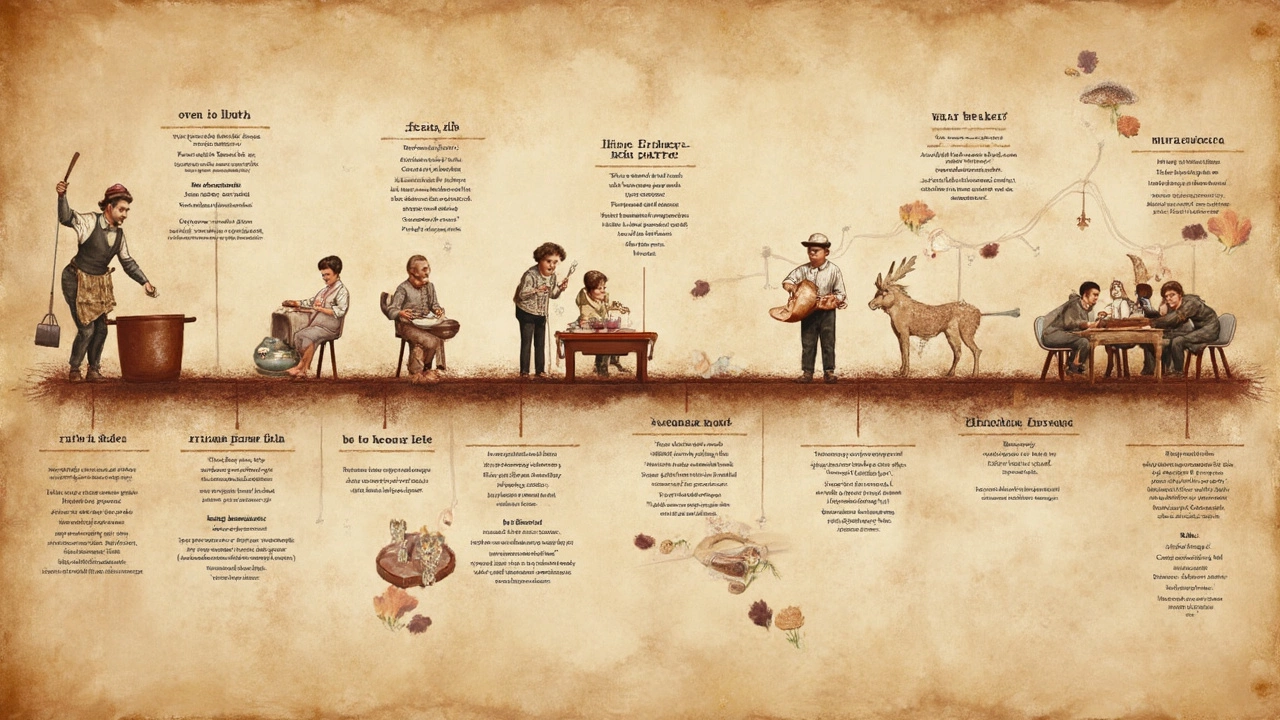
That Signature Crust
Let’s talk about what makes a real brownie totally stand out: that shiny, papery crust on top. People try for years to get that layer perfect, and with good reason—it’s the classic brownie calling card. Get the crust right, and you’ve nailed what everyone secretly craves in a brownie bite.
So, how does this iconic crust actually happen? It comes down to sugar and eggs. When you beat your sugar and eggs together long enough, the mix acts almost like a meringue. That thin layer floats up to the top as your brownie bakes, then crisps up as it cools. If you skip this step or just whisk everything together carelessly, you can end up with brownies that taste fine but look kinda dull on top—nowhere near that "wow" look you’re going for.
The experts agree on this. According to baker Alice Medrich, who’s basically the queen of brownies:
“If you want that shiny crust, beat the sugar and eggs really well before you fold in the melted chocolate and butter. Don’t be shy—it’s the secret to that beautiful top.”
Brownie fans try lots of shortcuts (adding chocolate chips, throwing marshmallows on top), but nothing beats the classic technique. Here’s how you can get that signature crust every time:
- Use granulated sugar instead of brown sugar—it helps the crust form better.
- Beat eggs and sugar together until the mixture turns pale and thick.
- Add melted butter and chocolate after beating, not before.
- Bake at the right temperature: too hot and the top can burn before the middle is done.
| Factor | Effect on Crust |
|---|---|
| Granulated Sugar | Creates the signature shine |
| Brown Sugar | Dulls shine, makes crust softer |
| Mixing Time | More mixing = better crust |
So next time you’re after that brownie bakery look, remember: it’s all about beating the eggs and sugar until your arm is a little sore. That’s the move that gets you that perfect, flaky top every single time.
Brownies Around the World
You might be surprised that the brownie isn’t just an American thing anymore. It started in the United States somewhere around the 1890s—most stories point to Chicago’s Palmer House Hotel serving up the first real batch, topped with walnuts and apricot glaze. But after that, brownies basically went global, each place adding their own spin to what counts as a good chocolate square.
Head to the UK, and you'll see brownies showing up in every coffee shop, but they’re almost always more fudgy than cakey—nobody wants a dry brownie with their afternoon tea. Some bakers there add things like salted caramel or white chocolate chunks for an extra kick. Down in Australia, cafés love giving the classic brownie a makeover with macadamia nuts or swirls of berry jam. It’s all about creativity, but they keep the core chocolatey vibe front and center.
Then in France, brownies have made their way into pâtisseries, but the French tend to use high-quality, dark chocolate, and you’ll rarely see them overloaded with mix-ins. In Japan, there’s a trend for mini-brownies, often wrapped individually and sold in cute boxes—sometimes with matcha or almond added, but always true to that dense, moist texture.
Even in South America, especially Brazil, brownies are a café staple. Bakeries there might top them with brigadeiro (a gooey chocolate fudge), making them extra rich. According to a 2022 market survey, brownie consumption in Brazil’s urban bakeries tripled in five years as more people sought quick chocolate treats with their coffee.
What’s clear across all these countries? It’s still the signature chocolate punch, that chewy, fudgy feel, and a no-nonsense approach to dessert that keeps the brownie instantly recognizable—even if it has a layer of matcha or a gooey middle. If you ever travel, keep an eye out—you might just find a new favorite version you’ll want to bake back home.
Pro Tips for Brownie Perfection
You can spot a rookie brownie by dry edges, a flat taste, or that dreaded cake-like texture. Want to land somewhere between chewy and gooey every single time? Here’s how you master the art of brownie baking at home.
- Don’t skip the real chocolate: The best brownies use melted quality chocolate, not just cocoa powder. You’ll taste the difference. Try a 70% dark chocolate for a richer bite.
- Measure your flour carefully: Too much flour is the fast lane to cakey brownies. For consistent results, weigh it or use the "scoop and level" method. Most classic recipes call for only 3/4 cup (about 90g) per 8x8 pan.
- Beat your eggs and sugar well: This helps create that crackly top everyone loves. Some bakers whip these together until the mixture looks pale and thick for that signature look.
- Use the right pan: Glass or metal pans bake differently. Metal gives a firmer edge and usually bakes faster. Glass pans might need a few extra minutes in the oven.
- Watch the oven, not just the clock: Brownies are done when the edges pull away from the sides, but the center should still look a little underbaked. A toothpick should come out with streaks, not clean.
- Let them cool… if you can: Cutting into hot brownies turns them into a chocolate goo (unless that’s your thing). Letting them cool for at least 45 minutes makes neater slices.
If you want the science behind that famous shiny crust, here’s what America’s Test Kitchen discovered:
“The key to that paper-thin, shiny crust is dissolving the sugar completely in the fat. Melting your butter with the sugar over low heat gets you that true brownie top.”
Did you know that the classic 8x8 brownie recipe usually feeds nine, but according to a recent home baking poll, over 60% of people admit to eating at least two pieces right away? Don’t be afraid to double up your batch.
| Baking Time (350°F) | Texture |
|---|---|
| 20 minutes | Very gooey, almost molten |
| 25-28 minutes | Fudgy but set |
| 30+ minutes | Cake-like, firm |
Want to level up? Toss in a handful of chocolate chips, swirl in some peanut butter, or top with flaky sea salt right out of the oven. Whatever you do, remember: the best brownies are the ones you love eating.


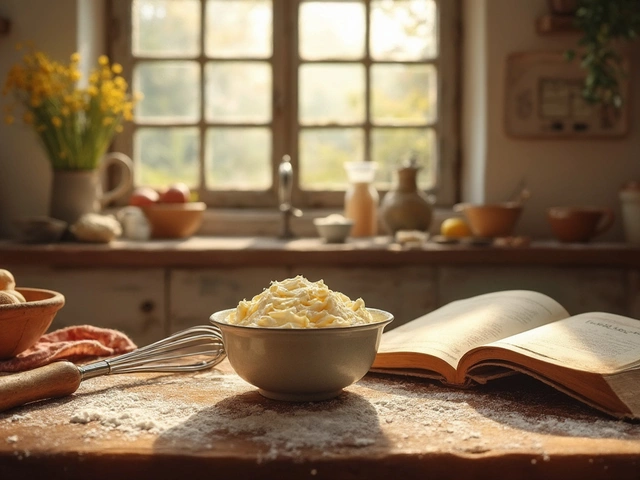
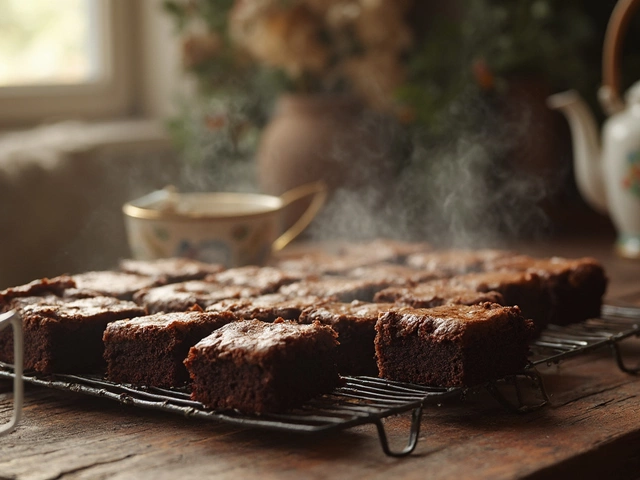
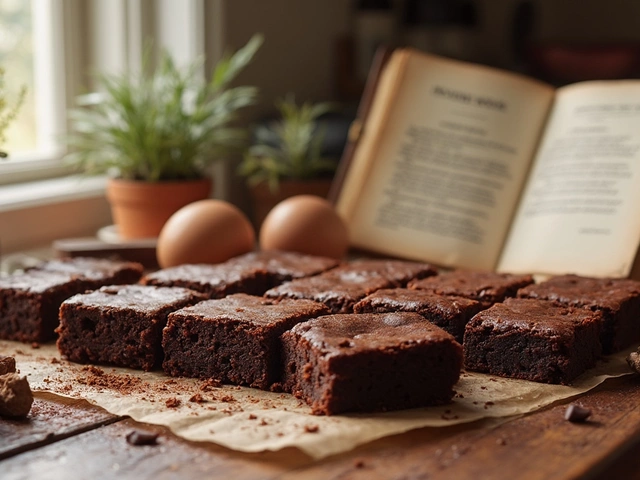



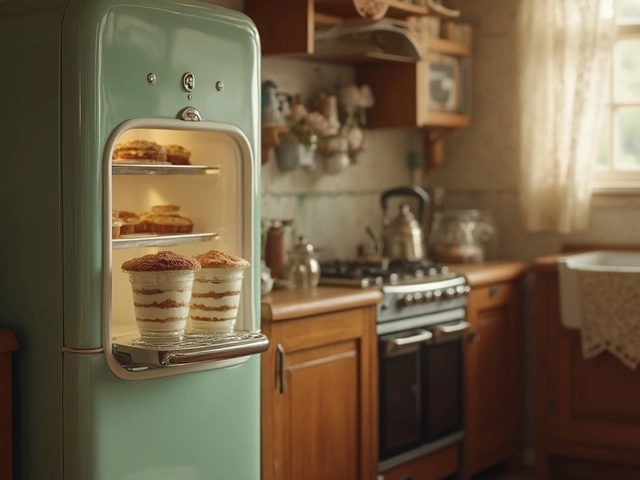
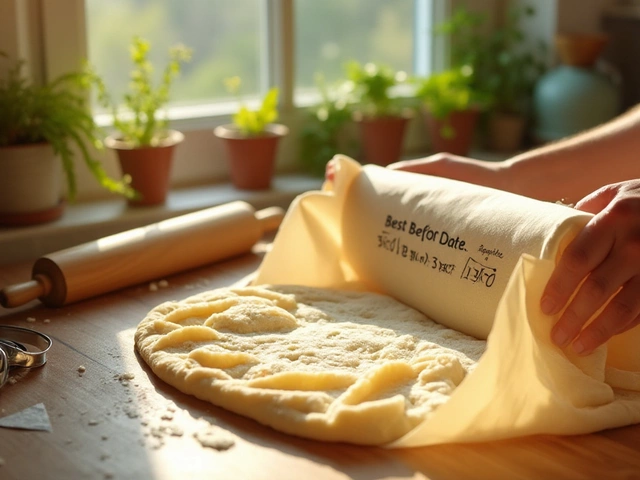
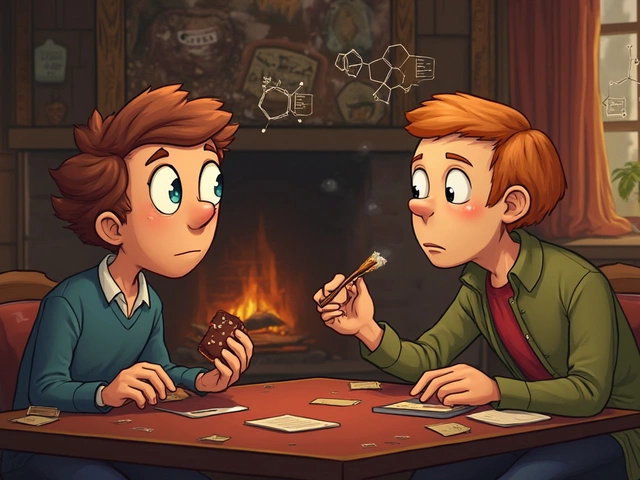

Write a comment